When Debbie Ocean, played by Sandra Bullock, calls the Met Gala “one of the most exclusive party invitations in America,” her accomplice Lou (Cate Blanchett) is quick to correct her: It is the most exclusive party invitation in America. While it is true that every attendee is vetted and approved by a committee of party planners, it’s also true that the Met Gala is a fundraiser for the Metropolitan Museum of Art, and anyone who can afford the $275,000 for a table (or a single ticket, which is $30,000) can attend. That’s why someone like Mitt Romney was at last month’s Met Gala, in a tuxedo he purchased on Amazon. But what does that matter? This would be a much shorter movie if the only thing they had to do was be rich enough to buy a ticket.
Anyway, we’re not here to talk about real life, which is boring. We’re here to talk about Ocean’s 8, which is fun. The latest installment in what was previously known as Steven Soderbergh’s Ocean’s Trilogy, Ocean’s 8 is part reboot, part sequel, produced by Soderbergh and directed by Gary Ross, who cowrote the film with Olivia Milch. Ocean’s 8 more or less delivers on what it promises: a bunch of hot and funny people doing an elaborate crime in elaborate outfits. Also, Rihanna plays a computer hacker. Ocean’s 8 follows the structure established by the previous three films beat for beat, but it is, in every respect, a knock-off of the Soderbergh films: It looks just like the real thing, but up close, the seams are all wrong. Does that matter? Not really.
Like the first Ocean’s Eleven made by Soderbergh, we begin with a parole hearing. Sandra Bullock plays Debbie Ocean, the conveniently never-previously-mentioned sister to George Clooney’s Danny Ocean character. Sent to jail after she was betrayed by her ex-boyfriend during a petty art scam, Debbie has her sights on the Metropolitan Museum of Art; more specifically, on stealing a Cartier necklace that she is going to manipulate onto the red carpet of the annual Met Gala. Debbie needs an actress to wear the necklace, a designer to insist that their vision is incomplete without it, and a team to remove and replace it during the event without anyone noticing.
In this parallel universe the Costume Institute is staging an exhibition so boring even typing it out makes me laugh a little: “Historical Fashion of European Royalty.” There’s no way in this post-McQueen fashion exhibition landscape that the Met would ever stage anything that simple; the exhibition on view right now required getting special permission from God, or at least his Catholic representatives. Still, who cares — the prissy theme is the perfect cover to get Rose Weil (Helena Bonham Carter), a struggling fashion designer facing prison time for tax evasion, to make a princessy gown for Daphne Kluger, a very famous actress character played by very famous (and also, in this role, extremely funny) actress Anne Hathaway. Together with her partner Lou — and Lou’s collection of velvet suits, and her motorcycle fetish — they assemble their team, which includes Mindy Kaling as a diamond expert, Awkwafina as a skateboarding pickpocket, Sarah Paulson as a suburban mom using her garage to stash stolen bikes and counterfeit Louis Vuitton luggage for her part-time job as a fence, and as previously mentioned and most important, Rihanna as a computer hacker who smokes a lot of weed and can entrap a museum security guard with nothing more than a Photoshopped poster of cute dogs.
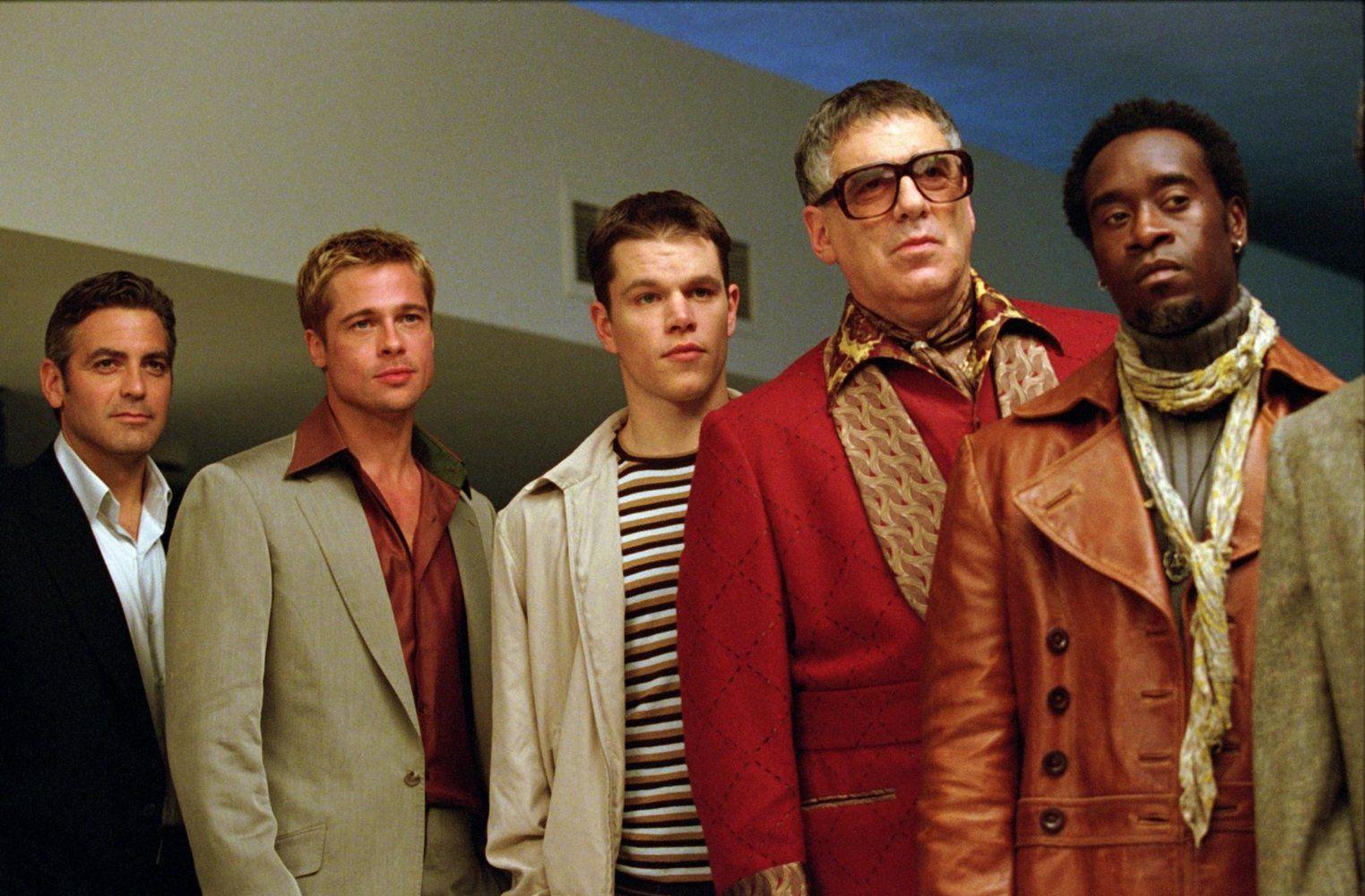
The first two Ocean’s movies (and to a certain extent, the third) were an improvement over the 1960 Ocean’s 11, a vehicle for the Rat Pack that is mostly corny, except for the uncredited and entirely improvised cameo by Shirley MacLaine. (Apparently, as payment Warner Bros. bought her a car, which is kind of an incredible scam in its own right.) Under Soderbergh’s direction, the more recent Ocean’s were stylish from all angles: the famous movie stars are very good at playing slightly cooler versions of their existing personae, and they look very good while they do it. Luck, in these movies, favors those who deserve it, and it pays out in cash. More than that, the elaborate cons satisfy the belief that wealth is fine and good, as long as the right people have it; the idea that if there have to be millionaires, they should at least look really good while they take the money, and they should know how to spend it properly, like us, if we ever got our hands on a few million. The third movie had a strange political dimension: The con involved redistributing Al Pacino’s wealth by rigging his new casino to pay out every player on opening night, as retribution for screwing over Elliott Gould’s rival real estate mogul, and there’s a subplot about two characters unionizing a factory in Mexico that manufactures dice for casinos. “Bread and roses,” Scott Caan’s character shrugs when he explains. This element of acknowledging and surreptitiously justifying their criminal activity is probably why it’s not as good as the other ones. I just want it implied that all property is theft. I don’t want anyone to say it.
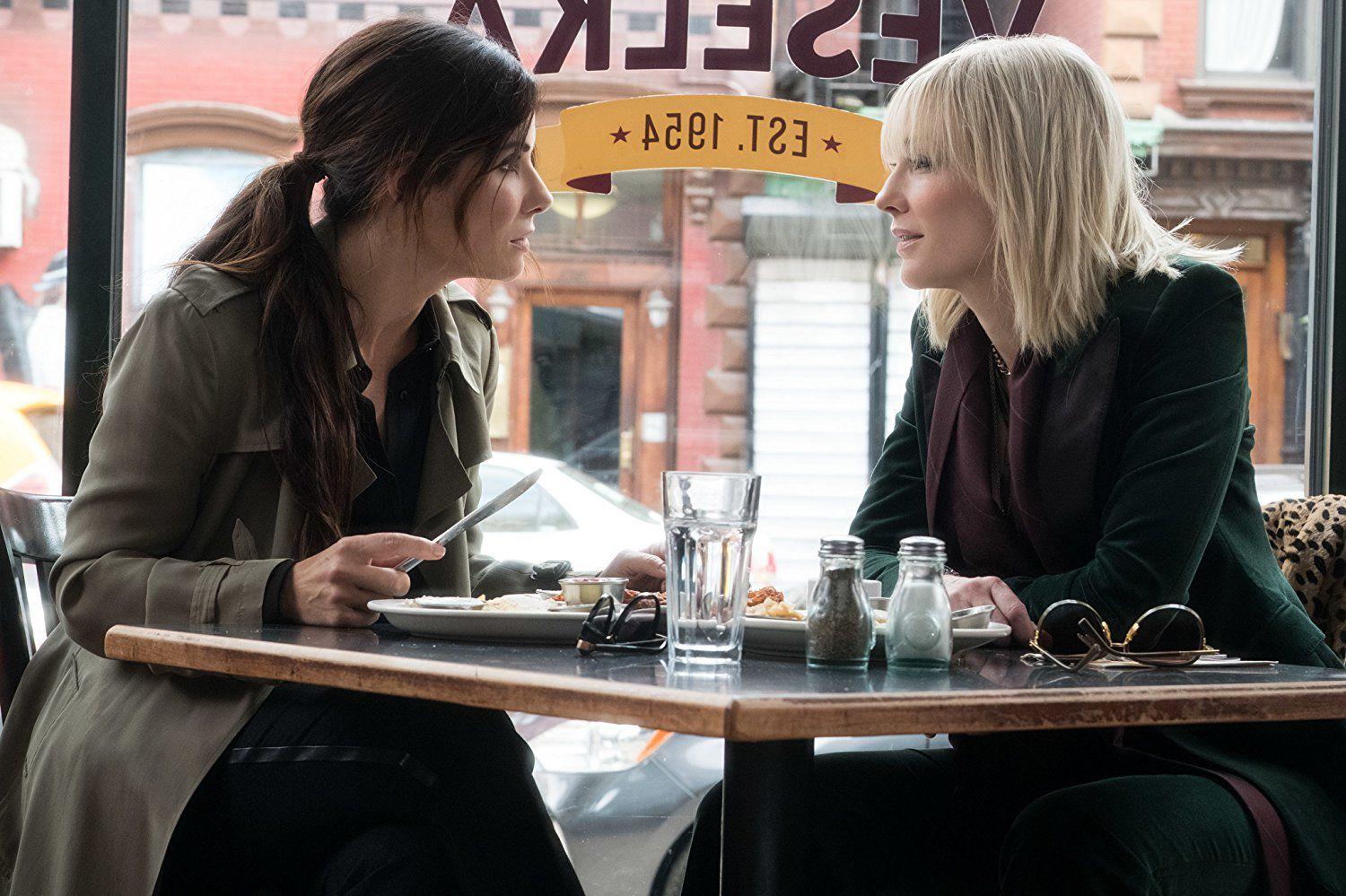
In the same way Ocean’s Eleven was really about George Clooney trying to win back Tess, his ex-wife (played by Julia Roberts), an ex is the real target in Ocean’s 8, though the intentions are different. It is unfair to compare Roberts to the entirely nondescript and blandly handsome art dude that is Debbie’s ex-boyfriend, Claude Becker (Richard Armitage), who we know must be important only because in this world he is somehow on the cover of GQ. He’s the fall guy for their con, which everyone agrees he deserves. No offense, but this guy is so boring it’s like Bullock has been paired with a Mr. Potato Head that comes with snap-on stubble. Still, he serves his purpose by setting us squarely in the overlap between two wealthy, powerful cultural industries closely associated with such imaginary concepts as “luxury” and “Manhattan,” so I guess he can stay.
The film’s fashion references are a strange range of cameos and sponcon. Anna Wintour, of course, appears as herself, and there’s a cute joke about her long-standing crush on Roger Federer. There’s also Andrew Bolton, the curator of the Met Costume Institute, as well as Zac Posen, Derek Blasberg, Lauren Santo Domingo, Hamish Bowles, and Tonne Goodman. The brands, too, are so prominently featured we might as well consider them cameos. An entire scene features Bullock and Blanchett flipping through issues of Vogue, searching for a designer who will meet with “Anna’s” approval, because “Anna” has to approve every fashion designer on the Met Gala red carpet. We are told, again and again, that Cartier diamonds and Cartier’s security systems (staffed by ex-Mossad agents and former Pontifical Swiss Guards) are the very best in the world. There are dummy ads for Marc Jacobs, an entire scene takes place inside a Subway franchise, and another scene between Kaling and Awkwafina is a tutorial on how to use Tinder. To be clear, I would watch an entire movie made of this scene. I would just also do so knowing that it is definitely an ad.
The real “call is coming from inside the house” moment of sponsored content comes during Debbie’s monologue explaining how and why they’re going to rob the Met Gala, and she uses scenes from the 2016 documentary The First Monday in May to demonstrate what the target is. We see Anne Hathaway as she appeared in real life, and the red carpet exactly as we might remember it. Of course, the many scenes from that documentary featuring Rihanna in her yellow Guo Pei couture gown (still one of the best Met Gala outfits ever) cannot be included, since she’s not playing an approximation of her pop star persona; that would spoil the fun.
First, a distinction. There are “fashion movies,” and then there are “movies about fashion.” “Fashion movies” are films that inspire or reflect a distinctive style, often creating a feedback loop between the designers that watch them and the clothes they make; read any interview with any major fashion designer and you’ll see that they inevitably mention a film or an actress that changed their life. Directors like Sirk, Hitchcock, and Fellini are often invoked for runway inspirations; so are actresses with a distinctive glamour, like Sophia Loren or Lauren Hutton. In popular culture, Blade Runner is a fashion movie, as is The Shining, as is Clueless. Soderbergh’s Ocean’s movies are, in my opinion, fashion movies, because they exist in a world where everything is made to be so immaculately mannered — where looking the part provides its own reward.
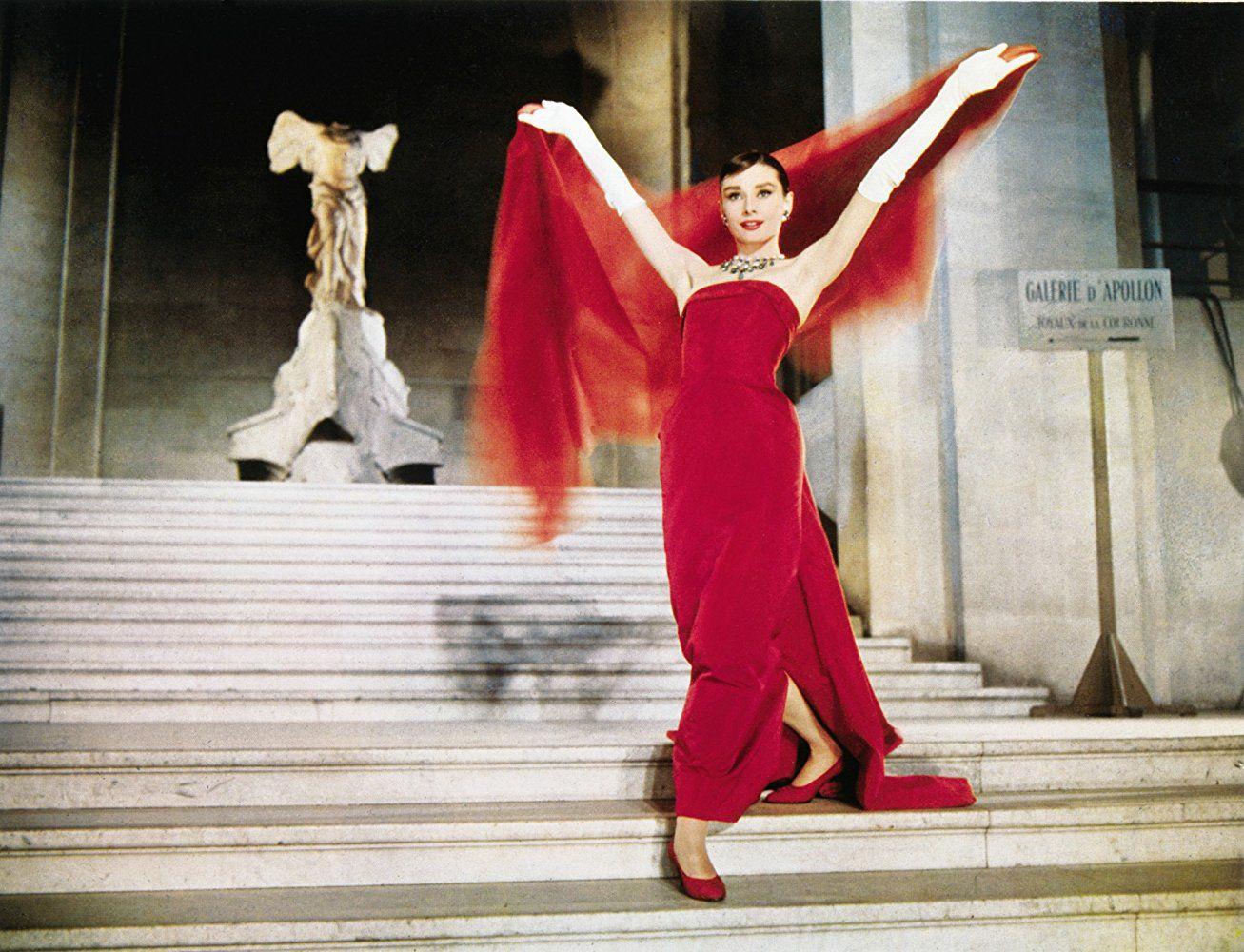
A movie about fashion, on the other hand, is a film that takes the fashion industry as its setting and the professionals who work within it as the characters. Funny Face is a gold standard of movies about fashion, but technically so is The Bitter Tears of Petra von Kant, and so is the Zoolander franchise. Ocean’s 8 would like to be both, but it is unfortunately neither. The references are right (Helena Bonham Carter is supposed to be a mix of Grace Coddington and Vivienne Westwood; Cate Blanchett is a nod to androgynous glam) but the resulting outfits are completely costume, rendering the movie fun to look at but neither inspiring nor aspirational.
There are also strangely outdated references; one extended joke sequence involves Banksy smuggling a fake portrait with a feminist message into the Metropolitan Museum of Art, triggering a security system overhaul that Rihanna will exploit. “He did this at the Tate,” one Met employee in the film says, which did happen — in 2003. By any standard of timing, let alone a fashion standard of timing, this reference has aged so badly it clashes with everything else, cheapening the world we’re supposed to be able to believe can exist.
Another notable event that occurred in 2003 was the publication of Lauren Weisberger’s book The Devil Wears Prada, a tepid novel that was then and is still now considered to be a barely fictionalized account of working as Anna Wintour’s assistant. It is perhaps best read as proof that access is no substitute for insight. Weisberger worked so closely with Wintour, whose power cannot be overstated — in fashion and media, as well as in fundraising for such institutions as the Democratic Party and the Metropolitan Museum of Art — and yet after she left Vogue and became determined to tell all, the worst criticism Weisberger could think of was she’s mean and working for her is hard.
The film adaptation of Prada was released three years later, and it is a great improvement on the book, especially if you watch it as a movie about Stanley Tucci playing a hardworking fashion editor tormented by a very pretentious new hire who believes incompetence is a cute personality trait, like being clumsy or having bangs. Even if you are inclined to take it as a film about Andrea (Anne Hathaway), a plucky young journalist who wants to succeed as a “real” writer but is mostly just an asshole to everyone at her entry-level fashion magazine job, it’s still a delight — funny and not that deep.
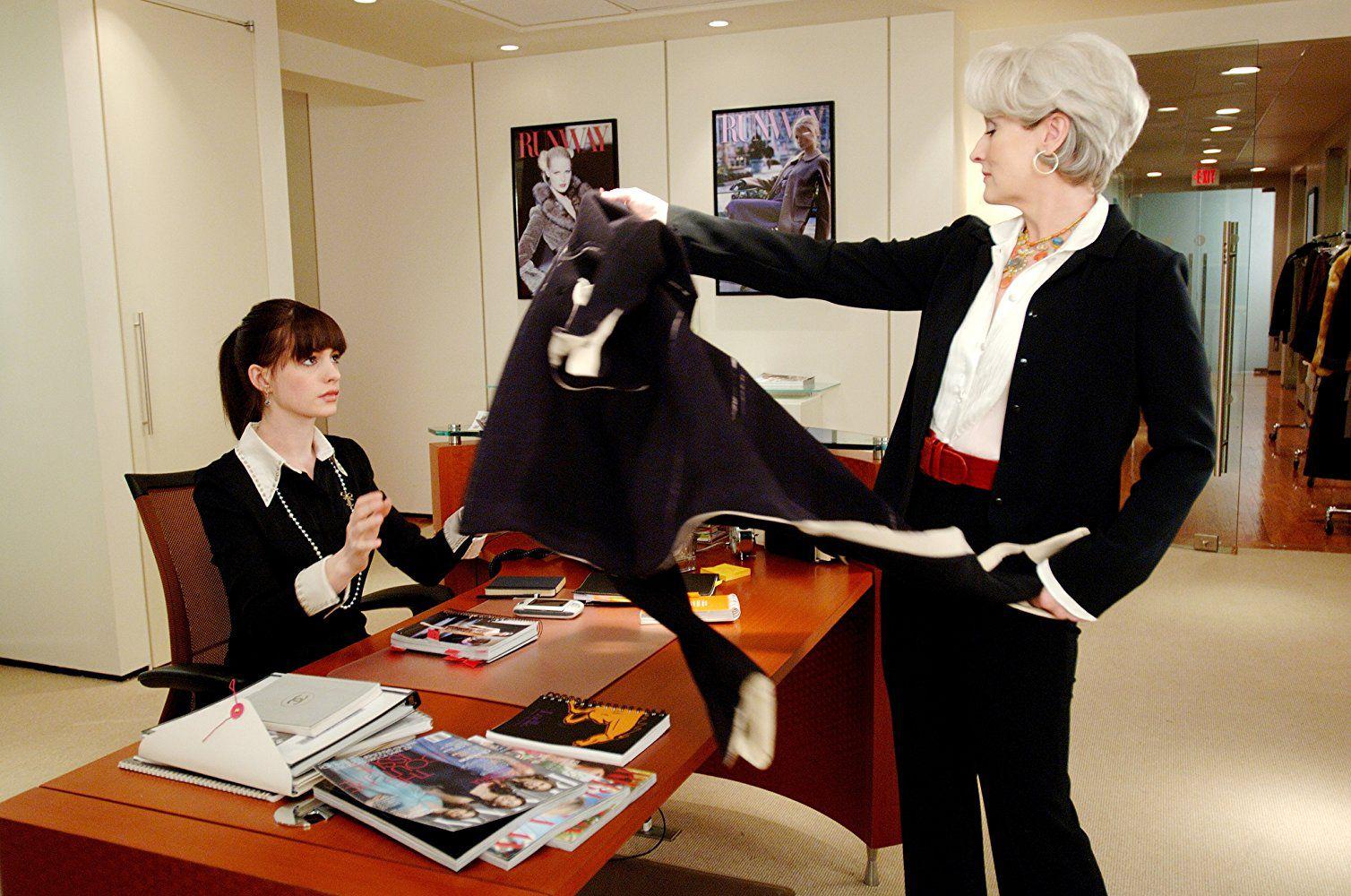
The film is often cited for the monologue delivered by Meryl Streep in her role as Miranda Priestly (almost certainly Anna Wintour), a simplified explanation of the way trends function using the fictional example of cerulean blue. What makes this moment so memorable, and the monologue so quotable, is not that it is literally correct; it is the satisfaction of watching a character we previously rated as a villain become, also, a worthy adversary, someone who knows not only what she’s talking about but also that our heroine is an intellectual fraud. Like Funny Face, which featured barely fictionalized versions of editor Diana Vreeland and photographer Richard Avedon, it is a loving satire, one that does not hold back but in going for the jugular does so with grace, both confirming the inherent absurdity while also acknowledging why we’d want to watch these characters at all.
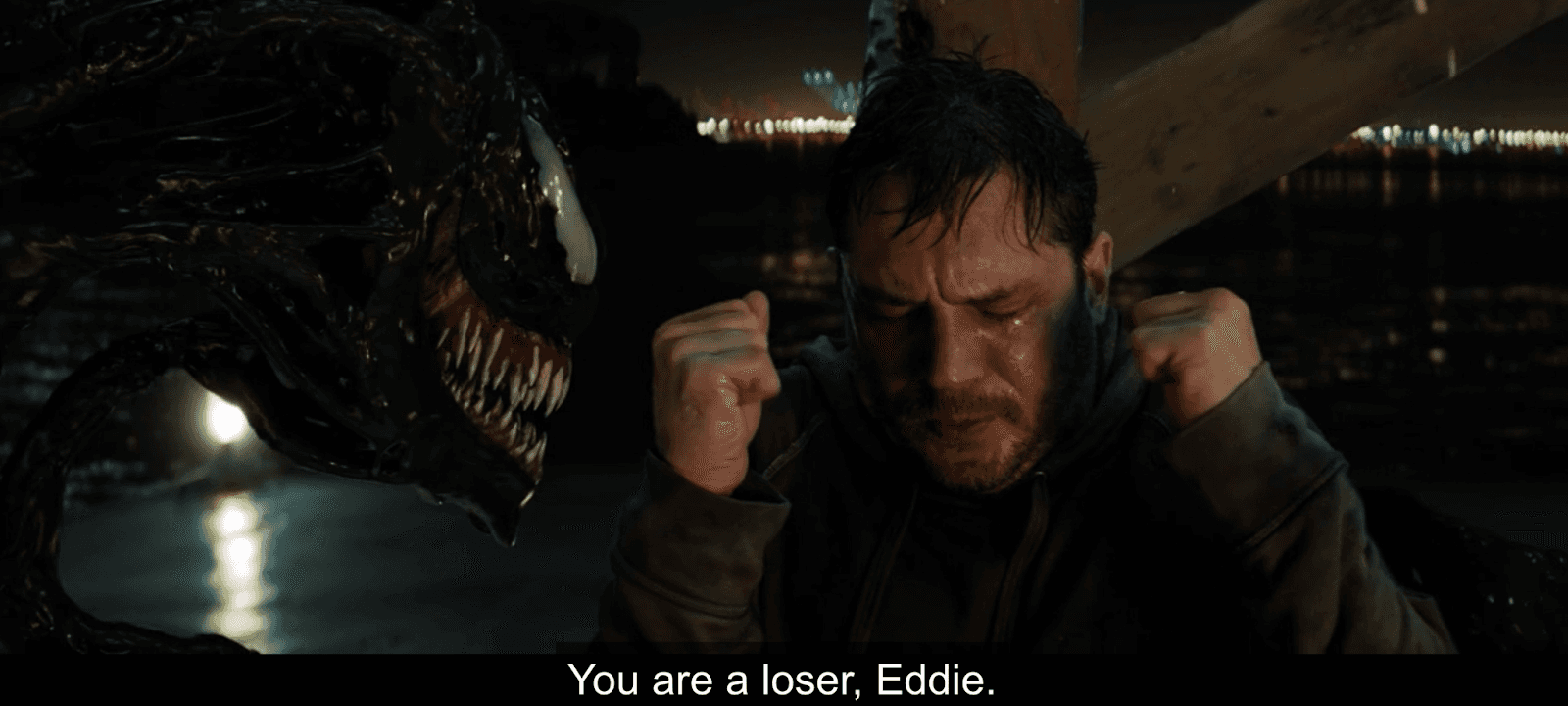
Fashion is a fair mark for satire; the people who work in it belong to a class that could be called “close enough” — privileged and powerful, they are still intended to work in service to the actual wealthy, whether what they have for sale is their gowns, their taste, or their magazine covers. It is now part of our cultural understanding, too, that fashion people are mean because they’re insecure, and that like schoolyard bullies they can be deflated and managed with some kindness and understanding. Streep’s Priestly is briefly humanized when we see her hurt over her divorce; Petra von Kant is pitiful in her need for love and affection. Yet insecurity combined with proximity to power is what makes such a fascinating villain. The first Zoolander is, in retrospect, a pretty vicious parody of a very real sentiment within the textile industry, and more than that, it all originates from a shadowy cabal of fashion people who care more about profits than people. By contrast, the second film, which Ben Stiller said would never have been made without Wintour’s involvement and support, features a plot where pop stars are getting murdered because they’re too hot. There are so many cameos (included Wintour, of course) that it is essentially an advertisement selling the idea that fashion is totally in on the joke, which, of course, kills it dead.
“There’s something about fashion that can make people very nervous,” Wintour says in The September Issue, a truth she knows better than anybody. It is an apt observation: In our vanities we are all vulnerable, and the twinned fashion and beauty industries both serve those insecurities. A less kind reading would be to say that they exploit them. In any case, there is an uneasy and unearned truce between the fashion industry and the people who wear clothes, a link made out of necessity (we need to get dressed) and ego (we want to look good). The nervousness that Wintour was describing is as much a fear of being judged as it is an accumulated understanding of what is wrong with the fashion industry.
But rather than admitting that what the fashion industry has is a morality problem, this tension has been turned into a publicity problem, one that can be corrected with more access to fashion people. This is unfortunately another reminder that access is no substitute for insight, or laughter. One of Wintour’s most famous editorial changes to Vogue was in putting movie stars and other celebrities on the covers, rather than the traditional use of models; the favor, it seems, is now being returned, and she and Vogue are being made into movie stars. The involvement and approval of the fashion industry has reduced what should be satire into sweet sentiment, choosing vanity over villains. Ocean’s 8 is guilty of being far too nice to everyone involved. The magazines are good; the fashion designers are nice; the famous people are just there to have a good time; what’s the point? Even the casting of Bullock, who has made a career out of playing the role of lawful good, makes the film feel too moral. She’s best known as either a cop, like in Miss Congeniality, or a mom, like in The Blind Side. Even in Speed, she’s helping Keanu Reeves fight crime; even in Practical Magic she’s the good witch. The crew in Ocean’s 8 wants to steal diamonds, sure, but mostly they want to be friends. We know this because they say sentences to this effect. One plot twist features a character making a surprising move, and when asked why, she explains she wants more friends. This clunky sincerity is a poor substitute for chemistry. I just want it implied that the real diamonds were the friends we made along the way; I don’t want anyone to say it.
Ocean’s 8 is missing the most crucial character for both a heist and a fashion film: a villain. In a story like this, there’s no substitute for a fair fight. Ocean’s Eleven introduced us to Terry Benedict, an evil casino owner who deserved to have his money and his girlfriend stolen; in Ocean’s Twelve he wanted his money back, with the help of a rival thief (played by Vincent Cassel, who break-dances his way through a museum’s laser fields); and in Ocean’s Thirteen there is Al Pacino, a fair target because he is both too mean and too vain. All three of them are funny, they really know how to wear a suit, and let’s not forget that they totally had it coming. They are people to root against, a bonding experience for the audience as well as the movie’s characters. But in Ocean’s 8 there is just Bullock’s boring ex-boyfriend; even James Corden, inexplicably playing an insurance adjuster investigating Debbie Ocean, is referred to as “family”; everyone who works at Vogue just wants to make sure you enjoyed the party; and Anne Hathaway’s vapid superstar is, by the film’s end, just another one of the girls. Ocean’s 8 makes it clear that they are open to a sequel, and I hope it happens, if only for a second chance at some new outfits and a more satisfying rivalry. This one isn’t as good as the real thing, but maybe they’ll have better luck next time.
Haley Mlotek is a writer and editor based in Brooklyn.